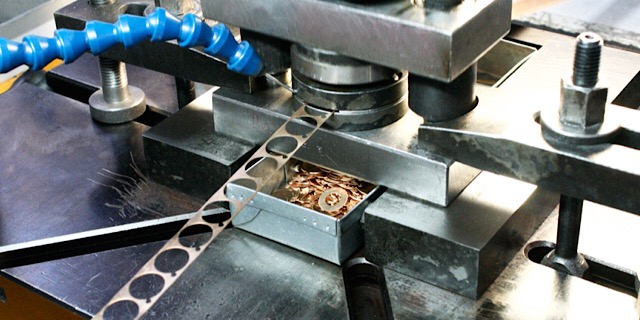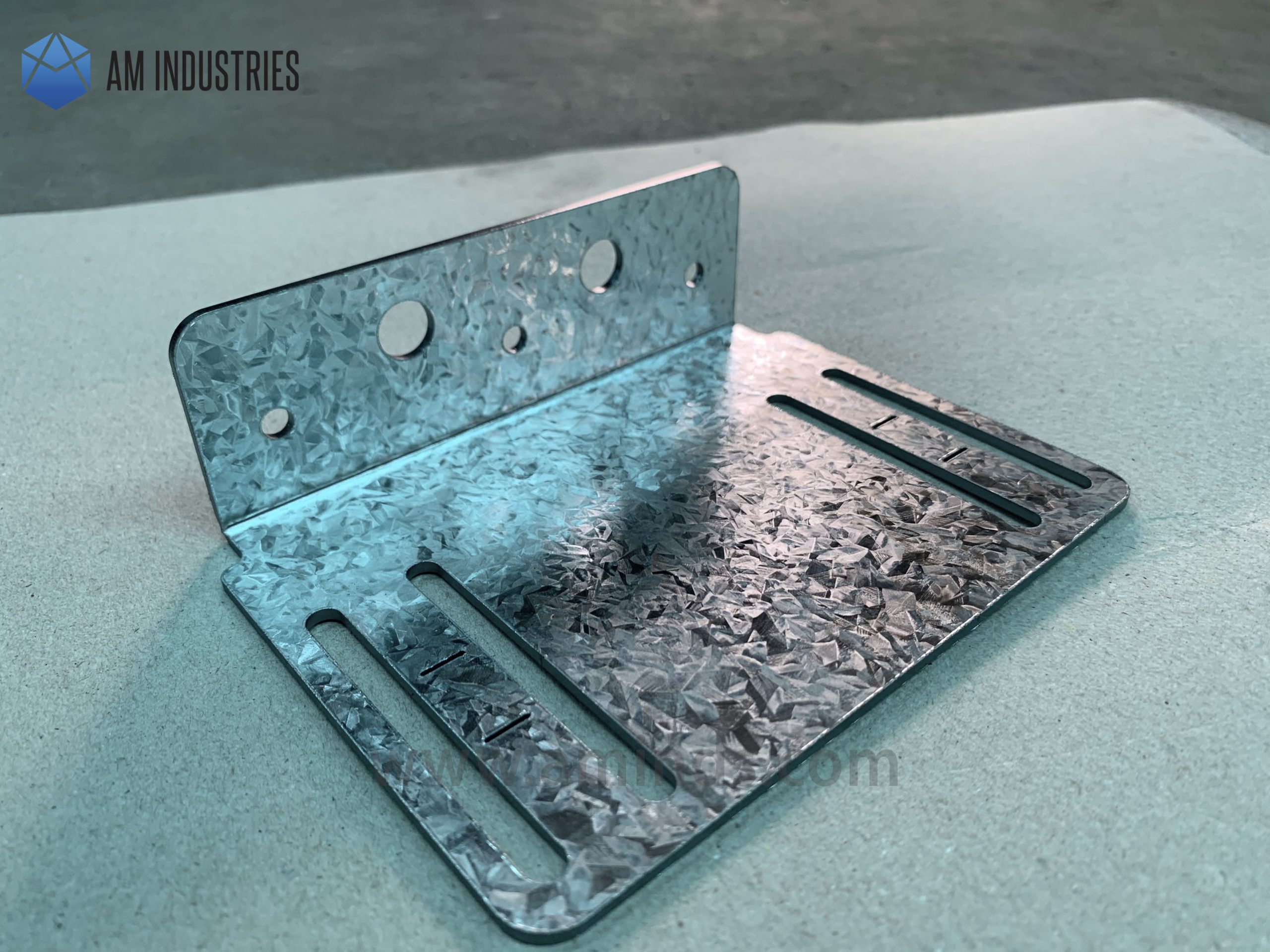Metal Stamping: Technologies Driving Market Development
Metal Stamping: Technologies Driving Market Development
Blog Article
Releasing the Potential of Steel Stamping: Specialist Tips and Ideal Practices Revealed
In the world of metal stamping, where precision and performance reign supreme, the mission to maximize processes and unlock surprise possibilities is a perpetual quest. Expertise sharpened over years of sector experience, integrated with advanced innovations and innovative practices, holds the crucial to achieving unparalleled results. As we navigate with the elaborate world of metal stamping, a more detailed take a look at the complexities of tooling style, product option, manufacturing performance, quality assurance, and emerging patterns assures a bonanza of insights waiting to be uncovered. Remain tuned to find just how these expert suggestions and ideal practices can reinvent the metal marking landscape.
Tooling Layout Optimization
Maximizing tooling style is crucial for enhancing effectiveness and precision in steel marking procedures. A well-thought-out tooling design can considerably impact the top quality and cost-effectiveness of steel stamping operations. By meticulously considering aspects such as product choice, die configuration, and component geometry, makers can simplify production procedures and boost total product high quality.
One key aspect of tooling style optimization is picking the most suitable products for the punches and dies made use of in the marking process. Products with high wear resistance and strength are liked to ensure durability and reduce tooling upkeep demands. Furthermore, pass away configuration plays an essential duty in accomplishing uniformity and consistency in stamped components. Proper die style can assist protect against problems such as wrinkling, tearing, and excessive springback, resulting in greater production returns and lowered scrap prices.
Moreover, optimizing component geometry with tooling design can help decrease material waste and production time. By very carefully shaping passes away and punches to match the wanted part specifications, producers can achieve tighter tolerances and boosted component quality. In general, investing time and resources in enhancing tooling layout can cause considerable lasting benefits for metal stamping operations.

Product Selection Approaches
Purposefully choosing products for steel stamping tooling is paramount for ensuring toughness and performance in making procedures. When picking materials for metal stamping applications, several crucial variables have to be taken into consideration.
An additional critical consider product option is the predicted production volume - Metal Stamping. For high-volume production runs, tooling materials with premium wear resistance and durability, such as device steels or carbide, are typically liked to hold up against the rigors of continual stamping operations
In addition, the intricacy of the stamping layout and the required precision also play a considerable function in product selection. For complex marking patterns or tight tolerances, products with high thermal conductivity and excellent machinability, like beryllium copper or tool steel alloys, might be better to achieve the wanted results.
Production Effectiveness Techniques
To enhance making output and lessen production expenses, executing efficient techniques in steel marking procedures is vital. One essential approach for boosting production efficiency is investing in automation. Automated steel marking devices can execute jobs with accuracy, consistency, and at a much faster price than hand-operated labor, bring about raised performance and lowered cycle times. Furthermore, carrying out anticipating maintenance techniques can aid prevent unexpected downtime by recognizing potential devices failures before they take place. By frequently checking machine efficiency and resolving problems proactively, suppliers can enhance production timetables and decrease disruptions.
An additional technique to boost manufacturing efficiency is via continuous process renovation. Carrying out routine audits and performance examinations can help determine traffic jams, useful reference inadequacies, and locations for improvement within the steel stamping process. By examining information and responses from these examinations, makers can implement targeted services to improve operations, boost throughput, and make best use of total performance.
Additionally, embracing lean manufacturing concepts, such as five technique and Kanban systems, can assist remove waste, enhance operations, and improve total productivity in metal stamping procedures. By promoting a society of constant renovation and empowering staff members to contribute ideas for effectiveness gains, makers can open the full capacity of their metal stamping processes.
Quality Control Procedures
Building on the visit this site structure of reliable manufacturing strategies in metal stamping processes, guaranteeing strict quality assurance steps is important for keeping item criteria and customer complete satisfaction. Quality assurance in metal marking entails organized inspection, testing, and monitoring of the production processes to identify and correct any kind of discrepancies or problems that might compromise the end product's honesty (Metal Stamping). Implementing measures such as routine devices maintenance, in-process assessments, and extensive screening of finished components can assist identify issues early on and stop pricey rework or product remembers
Normal audits and reviews of quality procedures can aid determine locations for improvement and make certain uniformity in product quality. By fostering a society of high quality consciousness among staff members and providing sufficient training on top quality control procedures, makers can enhance total item dependability and brand credibility.

Ingenious Steel Stamping Technologies
Advancements in metal stamping technologies have transformed the production market, improving efficiency and precision in the production process. Servo presses use exceptional control over the stamping procedure, permitting for changes in dwell, rate, and force time with extraordinary accuracy.

In addition, the fostering of additive production methods in metal stamping, such as 3D printing of die components, has streamlined the tooling design and manufacturing procedure. This approach enables greater layout adaptability, fast prototyping, and expense financial savings in tooling production. By leveraging these cutting-edge innovations, producers can open new levels of performance, high quality, and competitiveness in the steel marking market.
Conclusion
To conclude, the optimization of tooling layout, critical product choice, reliable production strategies, quality control measures, and cutting-edge technologies are vital for unleashing the complete possibility of steel marking. By implementing these best techniques and expert suggestions, suppliers can boost efficiency, boost high quality, and stay competitive in the metal stamping sector. It is vital for companies to constantly evaluate and boost their processes to attain success in this field.
As we browse via the intricate globe of metal marking, a more detailed look at the complexities of tooling layout, product choice, manufacturing effectiveness, high quality control, and emerging fads guarantees a treasure chest of insights waiting to be uncovered. A well-thought-out tooling style can dramatically influence the quality and cost-effectiveness of steel stamping procedures.Structure on the foundation of effective production techniques in steel stamping processes, making certain strict high quality control steps is crucial for preserving item standards and consumer satisfaction. Quality control in steel stamping involves organized inspection, screening, and surveillance of the production refines to identify and correct any type of discrepancies or defects that can compromise the final product's honesty.In final thought, the optimization of tooling design, calculated material option, reliable manufacturing methods, quality control procedures, and ingenious innovations are necessary for unleashing the complete capacity of steel marking.
Report this page